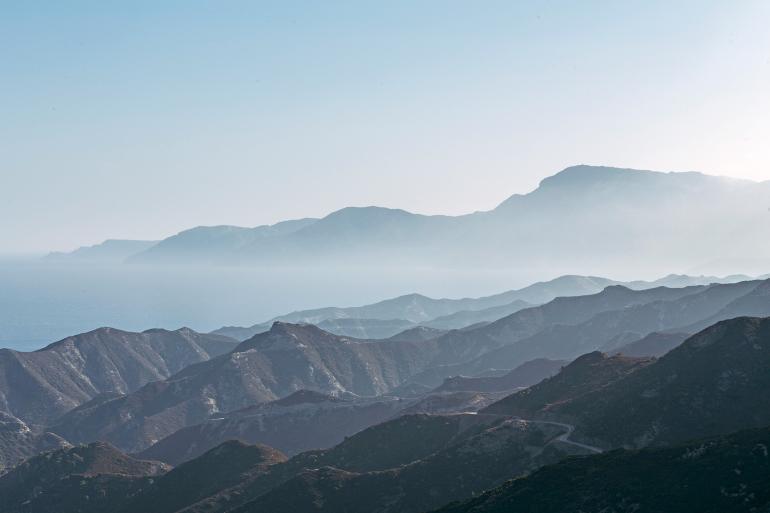Wild Beauty
Pure and untouched, Karpathos is steeped in history that emerges from every corner despite the passage of time.
Karpathos is a place that either captures your heart or doesn’t. Below its serene mountainous backbone which rises in the south and slopes deeply to the north, the heartbeat of the locals resonates more profoundly than elsewhere. Legend tells of the Arpathians (later renamed the Karpathians), the island’s first inhabitants who seized the gods of Olympus out of devotion to their island and carried them there. This is evident in Panigiria (traditional celebrations) when, with the melodies of the lyre and the lute, everyone becomes a part of a large company with lively Sousta (folk dancing) and cups of red wine inhand until early morning. It is a profound experience. Grandmothers invite you into their homes, greeting you with Manouli (local goat’s cheese) and sesame buns with cumin.


The island unfolds a landscape of deep gorges, rugged peaks, dense pine forests, sheer cliffs, caves adorned with colourful stalactites, and golden beaches. The interplay between the tame and the wild creates a continuous spectacle of images that astonishes even the most seasoned traveller. Describing what Karpathos is, let alone the emotions it elicits, proves challenging in just a few words. Karpathos boasts a treasure trove of enchanting beaches, from the emerald waters of Apella to the cedars of Diakoftis and the breathtaking views of Agios Nikolaos in Arkasa overlooking Kasos. There are approximately 60 hiking trails to explore and over 30 climbing areas. Meanwhile, surfers will find paradise in the azure waters surrounding the island.


Embarking on Karpathos is a captivating journey through the centuries as history comes to life in its museums. Explore the Archaeological Museum in Pigadia, an elegant Art Deco building from 1935 that showcases exhibits from the Neolithic to the Byzantine period. Immerse in the rich heritage at the Agricultural Museum of Pyles, a representation of a traditional farmhouse complete with a wine press, cheese factory, windmill and threshing floor. Additionally, the living history portrayed at the Folklore Museum of Othos, offers a vivid impression of a Karpathian home.

The villages of Karpathos are the elegant Aperi with its mansions and renowned craftspeople, Menetes with the magnificent church of the Assumption of the Virgin, the tranquil Mesochori with the three springs of Panagia Vrysiani, and the unique Olympos, the mediaeval village with its windmills, which remained isolated from civilization for centuries. Here, women with weathered hands and sun-kissed faces welcome you, dressed in traditional attire. They guide you through their homes adorned with handmade embroideries, recount tales from the past and treat you homemade Makarounes (hand-rolled pasta).



The island is the scent of thyme, lavender, rosemary, oregano and the eerie beauty of Saria, where Long-legged Buzzards and Eleonora’s falcons nest, thousands of goats roam, and the Mediterranean monk seal gives birth to its pups.
Exploring Karpathos is a journey from ultimate mysticism to Dionysian revelry, as seen in Easter, and its summers are a continuous celebration filled with dance, laughter and Mantinades (poetic songs). But above all, it is a place you will always want to return to for its culture and people.

_______________________________________
TEXT : ROMINA XYDA
PHOTOS : NICOLAS MASTORAS


YOU MAY ALSO LIKE
ZOE
Contemporary Horizons
Sailing in the Sporades